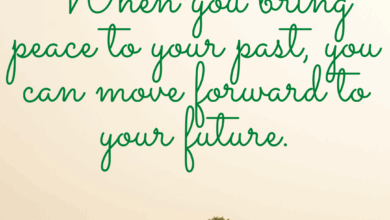Understand daily habits improving mental wellbeing

Life throws a lot at us. Deadlines, relationships, unexpected bills… it’s easy to feel overwhelmed. Stress isn’t just a feeling, though; it impacts our bodies too, leading to headaches, muscle tension, and even digestive issues. But what if I told you there was a powerful tool you already have, available to you right now, that can help dial down the tension? It’s your breath. We often take it for granted, but learning simple breathing techniques for stress relief can be a game-changer for your mental wellbeing. This isn’t about complicated meditation retreats or hours of practice. It’s about incorporating small, effective habits into your daily routine. We’ll explore how your breath connects to your nervous system, and practical exercises you can use anytime, anywhere to find a little more peace. From quick resets during a busy workday to calming practices before bed, we’ll cover techniques to help you manage anxiety, improve focus, and cultivate a greater sense of calm. We’ll also look at how mindful breathing can support better sleep and overall emotional regulation. It’s time to unlock the power of your breath and start feeling more grounded and resilient.
Key Takeaways
- Deep breathing activates the parasympathetic nervous system, which helps calm the body and mind.
- Diaphragmatic breathing (belly breathing) is a foundational technique for stress reduction.
- Box breathing is a simple, structured technique for quickly regaining composure.
- Alternate nostril breathing can help balance energy and reduce anxiety.
- Regular practice of these techniques leads to lasting improvements in mental wellbeing.
- Mindful breathing can be incorporated into everyday activities, like walking or washing dishes.
- Understanding the connection between breath and emotions is key to effective stress management.
The Science Behind Breath and Wellbeing
Have you ever noticed how your breathing changes when you’re stressed? It becomes shallow, rapid, and often you might even hold your breath without realizing it. This type of breathing activates your sympathetic nervous system – your “fight or flight” response. While essential for survival, constantly being in this state takes a toll on your mental and physical health. Fortunately, the opposite is also true. Consciously slowing and deepening your breath triggers the parasympathetic nervous system, often called the “rest and digest” system. This lowers your heart rate, reduces blood pressure, and promotes a sense of calm. This isn’t just new-age thinking; research from institutions like Harvard Medical School demonstrates the physiological benefits of mindful breathing practices. https://www.health.harvard.edu/mind-and-mood/relaxation-techniques-breath-awareness Essentially, you can hack your nervous system with your breath! Learning to control your breathing is a powerful tool for managing anxiety and improving your overall emotional state. It’s a natural, free, and readily available resource for self-regulation.
Diaphragmatic Breathing: The Foundation
Diaphragmatic breathing, also known as belly breathing, is the cornerstone of many relaxation techniques. Most of us breathe shallowly from our chest, which doesn’t fully oxygenate our blood. Belly breathing utilizes the diaphragm, the large muscle at the base of your lungs, allowing for deeper, more efficient breaths. To practice, place one hand on your chest and the other on your belly. Inhale slowly through your nose, focusing on expanding your belly while keeping your chest relatively still. You should feel your belly rise with each inhale. Exhale slowly through your mouth, gently contracting your abdominal muscles. Imagine you’re filling a balloon in your stomach. This technique is fantastic for reducing feelings of overwhelm and can be done anywhere – while waiting in line, at your desk, or even while watching TV. Consistent practice can lower cortisol levels (the stress hormone) and promote a sense of groundedness. Many people find it helpful to practice this for 5-10 minutes daily, but even a few deep breaths can make a difference.
Box Breathing: A Quick Reset
Sometimes you need a quick way to calm down in the moment. That’s where box breathing comes in. This technique is favored by Navy SEALs for its ability to quickly regain composure under pressure. It’s incredibly simple:
- Inhale slowly through your nose for a count of four.
- Hold your breath for a count of four.
- Exhale slowly through your mouth for a count of four.
- Hold your breath for a count of four.
Repeat this cycle four times. Visualize tracing the sides of a box as you breathe – inhale up one side, hold across the top, exhale down the other side, and hold across the bottom. This structured breathing pattern helps regulate your nervous system and bring you back to the present moment. It’s perfect for before a presentation, during a stressful phone call, or anytime you feel your anxiety rising. This is a great technique for managing panic attacks or moments of intense stress.
Alternate Nostril Breathing: Balancing Energy
Alternate nostril breathing, or Nadi Shodhana in yoga, is a powerful technique for balancing the nervous system and promoting a sense of calm. It’s believed to clear energy channels and reduce anxiety. Here’s how to do it:
- Sit comfortably with a straight spine.
- Close your right nostril with your right thumb.
- Inhale deeply through your left nostril.
- Close your left nostril with your right ring finger and release your right thumb.
- Exhale through your right nostril.
- Inhale through your right nostril.
- Close your right nostril and release your left nostril.
- Exhale through your left nostril.
Repeat this cycle for 5-10 minutes. If you find it difficult to close your nostrils, you can gently press them with your fingers instead. This technique is particularly helpful if you’re feeling scattered or overwhelmed. It’s often practiced in the morning to promote clarity and focus throughout the day.
Breathing for Better Sleep
Struggling to fall asleep? Your breath can help. Racing thoughts and anxiety often keep us awake at night. Practicing slow, deep breathing before bed can signal to your body that it’s time to relax. Try the 4-7-8 technique:
- Exhale completely through your mouth, making a whooshing sound.
- Close your mouth and inhale quietly through your nose for a count of four.
- Hold your breath for a count of seven.
- Exhale completely through your mouth for a count of eight, making a whooshing sound.
Repeat this cycle four times. This technique helps lower your heart rate and calm your mind, preparing you for a restful night’s sleep. Avoid practicing this technique while driving or in any situation where you need to remain fully alert.
Incorporating Breathwork into Daily Life
The beauty of these techniques is that they can be integrated into your everyday routine. You don’t need to set aside hours for meditation. Try practicing diaphragmatic breathing while you’re waiting for your coffee to brew. Use box breathing during your commute. Practice alternate nostril breathing during your lunch break. Even simply paying attention to your breath while you’re walking or washing dishes can be a form of mindful breathing. The more you practice, the more natural it will become, and the easier it will be to access these techniques when you need them most. Consider setting reminders on your phone to prompt you to take a few deep breaths throughout the day. Small, consistent efforts can lead to significant improvements in your mental wellbeing. Exploring guided meditations focusing on breath awareness can also be beneficial.
Understanding Your Emotional Breath
Pay attention to how you breathe when you experience different emotions. Do you hold your breath when you’re angry? Does your breathing become shallow when you’re anxious? Becoming aware of these patterns can help you identify and manage your emotions more effectively. When you notice yourself reacting to a stressful situation, consciously slow down your breathing and practice one of the techniques we’ve discussed. This can help you create space between your emotions and your reactions, allowing you to respond with more clarity and composure. This self-awareness is a crucial step in developing emotional resilience. Learning to recognize your emotional breath is like having a secret code to unlock your inner calm.
FAQs
Q: What if I feel dizzy when practicing these breathing techniques?
A: Dizziness can sometimes occur, especially when you’re first starting out. This is usually due to hyperventilation (breathing too quickly). Slow down your breathing and focus on exhaling fully. If dizziness persists, stop and consult with a healthcare professional.
Q: Can breathing techniques help with panic attacks?
A: Yes, breathing techniques for stress relief, particularly box breathing and diaphragmatic breathing, can be very effective in managing panic attacks. They help regulate your nervous system and reduce the physical symptoms of anxiety.
Q: How long does it take to see results from practicing these techniques?
A: Results vary from person to person. Some people experience immediate relief, while others may need to practice consistently for several weeks to notice significant improvements. The key is to be patient and persistent.
Q: Is there a wrong way to breathe?
A: While there isn’t necessarily a “wrong” way to breathe, shallow chest breathing can contribute to stress and anxiety. Focusing on diaphragmatic breathing can help you develop a more efficient and calming breathing pattern.
Q: Can I practice these techniques if I have a respiratory condition?
A: If you have a respiratory condition like asthma or COPD, it’s important to consult with your doctor before starting any new breathing exercises. They can advise you on which techniques are safe and appropriate for your specific condition.
A Breath of Fresh Air
Remember, taking care of your mental wellbeing is an ongoing process. These breathing techniques for stress relief are powerful tools, but they’re just one piece of the puzzle. Prioritize self-care, connect with loved ones, and seek professional help when needed. Your breath is always with you, a constant source of calm and resilience. Start small, be patient with yourself, and embrace the power of your breath to navigate the challenges of life with greater ease and grace. I encourage you to try one of these techniques today, even just for a few minutes. Notice how it feels. What shifts within you? I’d love to hear about your experience – feel free to share your thoughts in the comments below! And if you found this helpful, please share it with someone who might benefit.
Hi, I’m Sophia! Welcome to my blog Try Stress Management (trystressmanagement.com), where I share simple, down-to-earth ways to handle stress and bring more calm into everyday life. Think of me as your friendly guide, offering practical tips, reflections, and little reminders that we’re all figuring this out together.
When I’m not blogging, you’ll usually find me with a good book, sipping tea, or exploring new walking trails. I believe small changes can make a big difference—and that a calmer, happier life is possible for everyone.



